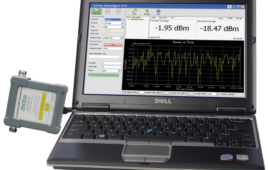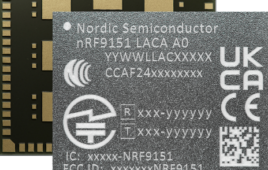Last week, I was fortunate to attend the IMS 2018 show in Philadelphia, PA. It’s the largest gathering of anything having to do with microwave technology, with over 9,000 exhibitors, speakers, and attendees coming to this year’s event. Between the different panels, seminars, technical workshops, and (of course) the massive show floor, there was no shortage of technologies, products, and demonstrations that I saw for the first time or were making their public debut.
An event like IMS is broad enough to attract companies, speakers, and technologists across several different industries, which is a strong attribute to the show’s diversity—especially on the show floor. The festivities led to many different trends emerging, with certain ones standing out more than others. I sat down with Dr. Sridhar Kanamaluru, the IMS 2018 general chair and longtime member of the Microwave Theory & Technique Society. Dr. Kanamaluru spent the last three years setting up this year’s show, and has attended nearly every IMS gathering since 1995. When I asked him what particular trends stood out to him, the first one he mentioned was perhaps the most obvious—5G connectivity.
“From the speaker’s point of view, 5G seems to be one of the most important topics being discussed at the show,” says Dr. Kanamaluru when I sat down with him last week. “Everybody seems to be talking about it (5G). If you don’t have something 5G-related in your booth, it seems you’re no longer the ‘it’ kid.”
With its promise of high-quality networks, superior download speeds, along with vastly improved streaming and connectivity capabilities, 5G has generated a lot of hype with its anticipated unveiling expected to revolutionize many industries and lives of everyday people. To add some additional perspective on 5G’s popularity, Dr. Kanamaluru mentioned a 5G summit that occurred at the 2017 IMS show.
“We had a big 5G summit that started in 2017 at last year’s show (in Hawaii). But the push and drive for 5G prompted IMS to conduct the summit for a second year in a row,” Dr. Kanamaluru recalls. “5G is making great things happen in these industries, like societies such as IEEE and Microwave Theory & Technique coming together based on the common goal of gaining more 5G knowledge and further innovating this remarkable technology. IMS has become the big core center of 5G. I’ve seen many papers (at IMS 2018) related to 5G, connectivity, mobility, and everything going with it so far this week, and the enthusiasm for the upcoming network is especially reflective on the show floor.”
One of the other trends Dr. Kanamaluru pointed out was what he described as a “buildup toward systems,” which notes how far long companies and technologies surrounding the development of components (like diodes and filters) have come as a result of modern innovation.
“What used to be a society of making diodes or little filters and selling them were simply in supply chains all companies and industries part of IMS about 20 years ago. These companies and products used to be on the lower tier of the industry,” Dr. Kanamaluru recalls. “Even components we used to package together 20 years back used to consist of much smaller broader parts—like a mixer or something like that.”
According to Dr. Kanamaluru, the industry-wide trend toward digitization with technologies and resources like silicon germanium, GaN, and all other core device technologies coming into play, was strongly showcased among exhibitors, panelists, and workshops.
“The line between RF and bits is getting blurred…so where do we draw the new line? All chips and transceiver sets and all the things on the show floor are reflected in the technical sessions, which is another trend I have seen,” Dr. Kanamaluru adds in regards to how the buildup toward systems was trending at last week’s festivities.
Out of the themes that this year’s show was based off, Dr. Kanamaluru said this year’s medical element (at first) seems both unique and unlikely to emerge as its own distinct trend—especially considering how IMS is solely focused on anything having to do with microwave technology.
“It’s self-evident one of the major themes of IMS will be microwaves,” says Dr. Kanamaluru. “With medicine, you might say ‘What do microwaves have to do with that field?’ It turns out that microwaves serve as a fundamental technology. I’m not claiming microwaves can cure cancer, but they can help with detecting and diagnosis. Devices like amplifiers, MRI CAT machines, and all things that go behind medicine relate to developments in microwave and RF that engineers made over the years.”
Dr. Kanamaluru used the example of going deep into an MRI machine, where you might find an amplifier designed by engineers from organizations like the Microwave Theory & Technique Society.
“Likewise as we move more into the telemedicine portion, it is our connectivity and devices that are going to provide the next transition,” Dr. Kanamaluru says.
This is essentially another way of saying that despite the contributions from the RF/microwave sector not immediately standing out in medical technologies, these fundamentals will continue to play an even bigger role as the medical field continues to expand through innovation moving forward.




